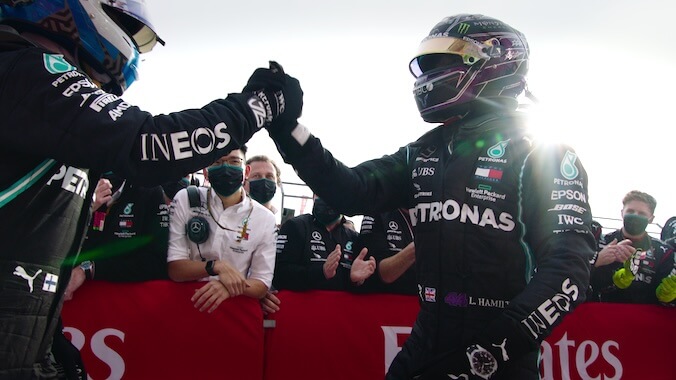The Winning Formula of Netflix’s Drive to Survive
Five years later, no other sports docuseries has matched the success or fandom fever of the Formula 1 series.
Photo Courtesy of Netflix
It’s a busy time of year for Formula 1. The 2024 Season is up and running, as 20 drivers fight it out for podium finishes, race wins, fastest laps, and all of the drama that comes with it. But away from the track, Formula 1 celebrates perhaps a more significant milestone: the five year anniversary of Drive to Survive debuting on Netflix, way back on March 8, 2019.
It’s hard to overstate the impact Netflix’s all-access look at Formula 1 has had for the global success of the sport. While its popularity was hardly in the toilet, years of Mercedes dominance and a perceived “lack of racing” had pushed casual fans away, leaving the grandstands at the tracks, and the sofas at home, dominated solely by the hardcore motorsport fans who’ll guzzle down any race weekend like a cold pint of Castor oil. Not only did Drive to Survive pull those casual fans back in, but it also created a whole new market for the sport: America. Since the show’s inception, F1 has added two additional races to the calendar (Miami and Las Vegas) to capitalize on that market and the seemingly ever-growing popularity it enjoys within it. But what is it about Drive to Survive that has driven such resounding success? We’ve seen all-access docuseries before, from HBO’s Hard Knocks to Prime Video’s various iterations of All or Nothing, and there’s been no surge in fandom from those shows. So, what’s the difference?
In a word: honesty. Those previously mentioned series presented a world to its audiences that very much feels like what the team wants you to see, or the league offering a tiny peek behind the curtain without ever throwing them wide open to air everything out. They’re always too sterile, too simple; populated by coaching platitudes and paint-by-numbers motivational speeches rather than any real behind-the-scenes grit. Drive to Survive, while dramatized in various points, offers a startling level of honesty from the drivers and team principles through its frames each season. You’re unlikely to see 49ers coach Kyle Shanahan calling his team “a bunch of f—ing wankers… a bunch of f—ing clowns,” in any official NFL-sanctioned video but, thankfully, Haas Team Principal Guenther Steiner was on hand to do just that during Season 1. Or in later years, we saw drivers label their own team as joke, criticizing every decision from race strategy to future driver line-ups. Even in-sport controversies like Red Bull’s breach of the Formula 1 spending cap are covered, something which easily could have been glossed over.
Compare this frankness with the avalanche of coach-speak and player truisms we’re treated to, or rather, endure, on shows like Hard Knocks, and it isn’t hard to see why Drive to Survive felt (and still feels) like such a breath of fresh air. It’s surprising then that the sports docuseries which followed Drive to Survive on Netflix, like Break Point, Full Swing, and Six Nations: Full Contact—all executive produced by James Gay-Rees, Paul Martin, and Box to Box Films, the minds behind Drive to Survive—never permeated the collective consciousness in the same way. They all follow the drama and the controversy of the sport with a similar level of frankness, they’re all produced in a similar way with a blend of interviews and action. So why can’t these shows reignite their respective sports in the same way as Formula 1 and Drive to Survive?
-

-

-

-

-

-

-

-

-

-

-

-

-

-

-

-

-

-

-

-

-

-

-

-

-

-

-

-

-

-

-

-

-

-

-

-

-

-

-

-








































